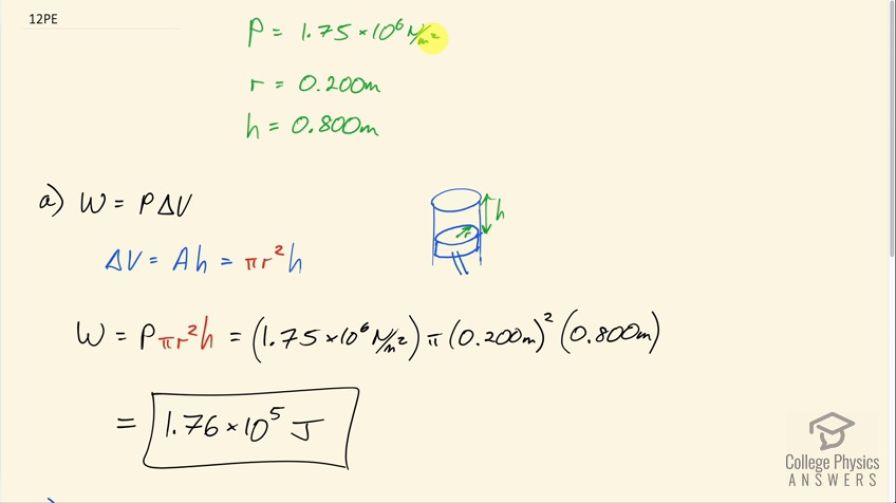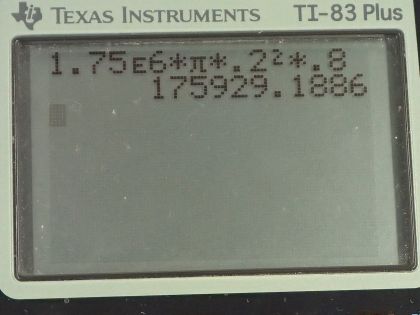Question
Steam to drive an old-fashioned steam locomotive is supplied at a constant gauge pressure of (about 250 psi) to a piston with a 0.200-m radius. (a) By calculating , find the work done by the steam when the piston moves 0.800 m. Note that this is the net work output, since gauge pressure is used. (b) Now find the amount of work by calculating the force exerted times the distance traveled. Is the answer the same as in part (a)?
Final Answer
- The same as in part (a)
Solution video
OpenStax College Physics for AP® Courses, Chapter 15, Problem 12 (Problems & Exercises)

vote with a rating of
votes with an average rating of
.
Calculator Screenshots
Video Transcript
This is College Physics Answers with Shaun Dychko. This steam driving a piston in a steam engine has a pressure of 1.75 times 10 to the 6 newtons per square meter and that is gauge pressure; the radius of the piston is 0.200 meters and the distance it's gonna travel or the height of its stroke is 0.800 meters. We use work equals pressure times change in volume to calculate the work done and now the change in volume is the area of the surface of this piston multiplied by the distance it travels— this is a volume of cylinder in other words— and we replace area with the area of a circle, π times its radius squared and then put all of this in place of ΔV here. So the work done then is 1.75 times 10 to the 6 newtons per square meter times π times 0.200 meters—radius—squared times 0.800 meters—distance travelled— and that's 1.76 times 10 to the 5 joules and this is the net work done since this is the gauge pressure. Now in part (b), we are asked to calculate work using force times distance or height in this case. So we need to use an expression to replace F using pressure. So pressure is force divided by area and we can solve for F by multiplying both sides by A and we have force is pressure times area and area again is πr squared so we replace F with Pπr squared and that's still multiplied by this h that's copied there. This is exactly the same as this and so... yeah, doesn't matter which way you do it.
